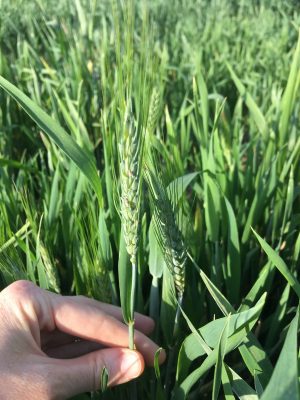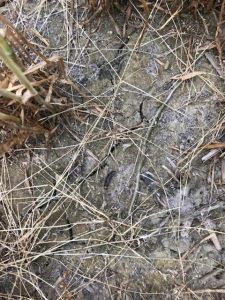Most of the wheat crop in Virginia is currently between flag leaf emergence and heading with some wheat close to the flowering stage. Foliar diseases including powdery mildew and leaf blotch have been observed in some fields, but overall levels of disease have been low so far. As wheat reaches the flowering stage, it is susceptible to infection with Fusarium head blight (FHB), and this is the critical stage for making fungicide applications. Currently, the risk for FHB infection is low throughout Virginia. In addition, the 3-day forecast indicates risk will remain low. FHB risk can be monitored using the Fusarium Risk Assessment Tool (http://www.wheatscab.psu.edu/).
Recommended fungicides for control of FHB and DON contamination include Caramba, Prosaro, Proline, and Miravis Ace. Do not apply a strobilurin-containing fungicide after the flag leaf stage since this has the potential to increase DON concentrations in the grain. To maximize their effectiveness, fungicides for FHB and DON control should be applied at early flowering or up to one week later. Fungicides that control FHB and DON will also control foliar diseases including powdery mildew, leaf rust, stripe rust, and leaf blotch. For specific wheat disease management recommendations or assistance with disease identification, contact Dr. Hillary L. Mehl (hlmehl@vt.edu). The 2019 Fungicide Efficacy Table for Wheat can be downloaded below.







